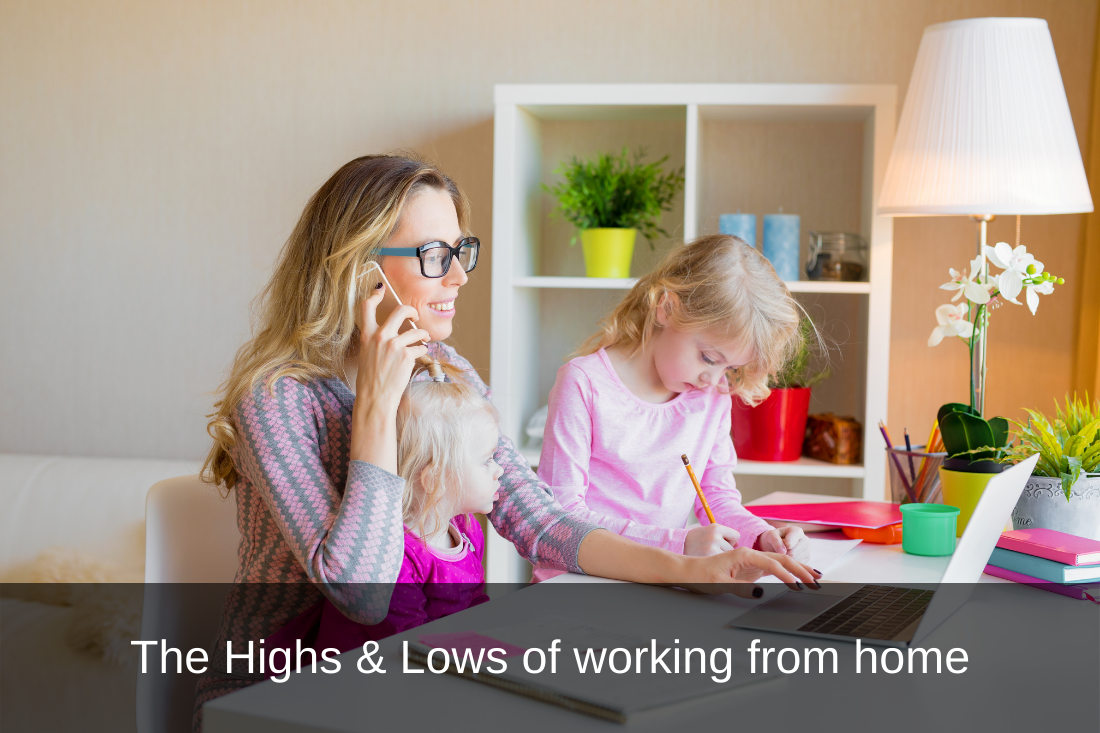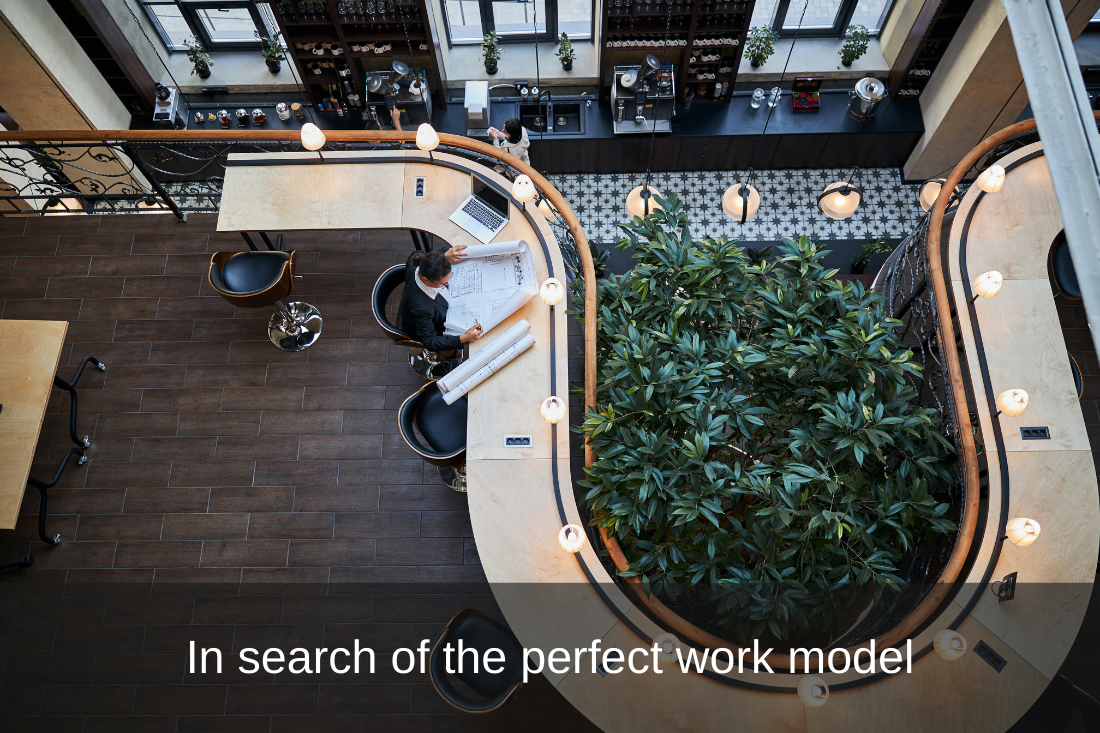Future of Work
Introduction to Future of Work
The world in which we work is constantly changing. Businesses need to embrace change and look at the future of work as something positive, exciting and dynamic. Change can present new challenges but also open up exciting opportunities with the right mindset.
New careers and ways of working are inevitable as artificial intelligence, automation, collaboration platforms, the internet and new software continue to make significant changes to our workplace.
COVID-19 has accelerated existing trends and caused businesses to re-evaluate many aspects of their work practices. Businesses have learned quickly about the immediate, practical future of work. The most obvious lesson – you don’t need to be at the office to get stuff done – was already understood in tech, just never proven at scale. We’re only starting to grasp the implications of that real-world confirmation.
New careers and ways of working are inevitable as artificial intelligence, automation, collaboration platforms, the internet and new software continue to make significant changes to our workplace.
COVID-19 has accelerated existing trends and caused businesses to re-evaluate many aspects of their work practices. Businesses have learned quickly about the immediate, practical future of work. The most obvious lesson – you don’t need to be at the office to get stuff done – was already understood in tech, just never proven at scale. We’re only starting to grasp the implications of that real-world confirmation.
Our latest insights
|
COVID-19 has accelerated the transition to remote working, forcing companies to adapt or die. Those companies not re-imagining the...
|
The “new normal” of work is more a work in progress than a done deal but there’s no doubt that the momentum for change is unstoppable...
|
Read more -->
|
1. The new normal
If there’s one thing that cannot be denied, it is that the world has changed because of the Covid-19 pandemic. In economic, educational, technological and business matters, many things that might have been relevant before the pandemic no longer seem important. Meanwhile, other factors that were formerly considered optional have become indispensable.
The challenge that countless entrepreneurs have faced is how to sustain themselves and their businesses during these difficult times. Teleworking has become just one key to maintaining operations and work processes. This transformation is still underway, and it is too early to determine the exact scope of the pandemic’s impact worldwide. What is certain, though, is that our world will never return to exactly the way it was. Accordingly, both new ventures and existing businesses must adjust to new consumer habits to survive.
Although this is not a simple task, there are some fundamental factors that entrepreneurs should consider as they adjust to the new normal of business and marketing.
The challenge that countless entrepreneurs have faced is how to sustain themselves and their businesses during these difficult times. Teleworking has become just one key to maintaining operations and work processes. This transformation is still underway, and it is too early to determine the exact scope of the pandemic’s impact worldwide. What is certain, though, is that our world will never return to exactly the way it was. Accordingly, both new ventures and existing businesses must adjust to new consumer habits to survive.
Although this is not a simple task, there are some fundamental factors that entrepreneurs should consider as they adjust to the new normal of business and marketing.
2. Office of the future and remote working
The coronavirus has changed many aspects of our society, some temporarily and others in ways that are likely to be permanent. One such example is the workplace environment and our expectations around the office of the future.
When we’ve previously discussed the future of the workplace in Australia, we’ve highlighted the challenges of skills shortages, the war for talent and managing an increasingly multi-generational workforce. These challenges have thrown up a need for organisations to:
In terms of workplace design, we’ve also predicted that the future will hold more diverse and flexible workspaces, such as quiet zones for deep work, or meeting areas for collaborative teamwork. For employers, this means being intentional in considering the needs of their employees for workspaces that accommodate different types of work and working styles.
But in the wake of a global pandemic, how has the future of work changed and what can we expect the office of the future to look like?
It’s worth noting that disease and the fear of infection has influenced architecture and the form of our built environments many times in the past. Cholera prompted the introduction of sewerage systems, the bubonic plague in China led to rat-proofing buildings, and tuberculosis is at least partially responsible for the white, clean modernist aesthetic.
There is little doubt that the COVID-19 pandemic is also changing the way we use our workspaces right now.
Contactless design Base building architects and workplace designers are prioritising hands-free and contactless pathways through offices, using technology such as voice activation, sensors, facial recognition and smartphones. Ideally, we will be entering our buildings through sensor doors, calling the lift on our smartphones and using facial recognition to enter your office suite, making it to your desk, without the need to needlessly touch surfaces. Embracing these technologies will further future-proof workspaces and increase visitor and employee engagement within the spaces.
Working flexibly and remotely has suddenly been normalised and staff have responded in an exceptional manner to the challenges they were faced with. The stigma attached to working flexibly and remotely has significantly disappeared.
This period has been enlightening, giving us a fresh perspective on the way we work; a reset of work-life balance as we have not experienced in the recent past. We need to accept that with enlightenment comes responsibilities for us as employees, to work proactively to make the new environment work. As such, we’ve identified some success factors for individuals and teams working in the new normal:
1. The ability to work with autonomy. William Shakespeare, as always, makes this point with the least verbiage: “It is not in the stars to hold our destiny, but in ourselves.” Organisations will benefit greatly from team members that are self-directed and who manage up and drive results, rather than being passengers on this journey.
2. Physical distance requires – and often builds – trust. Stronger bonds have been built in teams as we prove to ourselves and to each other that we are reliable and available – despite being physically distanced.
3. Flexibility requires an outcome focus. Work is not a rigid time schedule, but rather is about goals you achieve and tasks you master. Our forced work-from-home time has shown us what we always knew, but were frightened to demonstrate: that it is the output and outcome that matter, not that you were still at your desk at 7pm on a Thursday.
4. True connection comes from knowing the people behind the work. We’ve come to know each other on a deeper level now – being let into each other’s sanctuaries. We’ve seen changes in the way colleagues interact. Emotional barriers have been broken down as we’ve witnessed each other on Zoom calls, managing our work and home lives alongside one another. We’re meeting each other’s pets, kids and housemates; seeing inside their bedrooms, living rooms and kitchens.
The clear boundaries between work and home have become blurred and this is often for the better, creating more genuine relationships and greater flexibility in response to different employees’ needs. Our relationships are no longer transactional and will hopefully never return to being just that.
Managers and business leaders have also been innovative in how they support their teams from a distance, with many showing greater concern for employee mental health and wellbeing. As remote workers make up a greater portion of their teams in the future, employers need to continue to facilitate engaging employee onboarding, collaboration and connection.
When we’ve previously discussed the future of the workplace in Australia, we’ve highlighted the challenges of skills shortages, the war for talent and managing an increasingly multi-generational workforce. These challenges have thrown up a need for organisations to:
- Increase employee benefits and flexible working options to attract talent
- Compete more readily for talent on a global scale
- Reduce focus on degrees, skills and experience in favour of talent and purpose.
In terms of workplace design, we’ve also predicted that the future will hold more diverse and flexible workspaces, such as quiet zones for deep work, or meeting areas for collaborative teamwork. For employers, this means being intentional in considering the needs of their employees for workspaces that accommodate different types of work and working styles.
But in the wake of a global pandemic, how has the future of work changed and what can we expect the office of the future to look like?
It’s worth noting that disease and the fear of infection has influenced architecture and the form of our built environments many times in the past. Cholera prompted the introduction of sewerage systems, the bubonic plague in China led to rat-proofing buildings, and tuberculosis is at least partially responsible for the white, clean modernist aesthetic.
There is little doubt that the COVID-19 pandemic is also changing the way we use our workspaces right now.
Contactless design Base building architects and workplace designers are prioritising hands-free and contactless pathways through offices, using technology such as voice activation, sensors, facial recognition and smartphones. Ideally, we will be entering our buildings through sensor doors, calling the lift on our smartphones and using facial recognition to enter your office suite, making it to your desk, without the need to needlessly touch surfaces. Embracing these technologies will further future-proof workspaces and increase visitor and employee engagement within the spaces.
Working flexibly and remotely has suddenly been normalised and staff have responded in an exceptional manner to the challenges they were faced with. The stigma attached to working flexibly and remotely has significantly disappeared.
This period has been enlightening, giving us a fresh perspective on the way we work; a reset of work-life balance as we have not experienced in the recent past. We need to accept that with enlightenment comes responsibilities for us as employees, to work proactively to make the new environment work. As such, we’ve identified some success factors for individuals and teams working in the new normal:
1. The ability to work with autonomy. William Shakespeare, as always, makes this point with the least verbiage: “It is not in the stars to hold our destiny, but in ourselves.” Organisations will benefit greatly from team members that are self-directed and who manage up and drive results, rather than being passengers on this journey.
2. Physical distance requires – and often builds – trust. Stronger bonds have been built in teams as we prove to ourselves and to each other that we are reliable and available – despite being physically distanced.
3. Flexibility requires an outcome focus. Work is not a rigid time schedule, but rather is about goals you achieve and tasks you master. Our forced work-from-home time has shown us what we always knew, but were frightened to demonstrate: that it is the output and outcome that matter, not that you were still at your desk at 7pm on a Thursday.
4. True connection comes from knowing the people behind the work. We’ve come to know each other on a deeper level now – being let into each other’s sanctuaries. We’ve seen changes in the way colleagues interact. Emotional barriers have been broken down as we’ve witnessed each other on Zoom calls, managing our work and home lives alongside one another. We’re meeting each other’s pets, kids and housemates; seeing inside their bedrooms, living rooms and kitchens.
The clear boundaries between work and home have become blurred and this is often for the better, creating more genuine relationships and greater flexibility in response to different employees’ needs. Our relationships are no longer transactional and will hopefully never return to being just that.
Managers and business leaders have also been innovative in how they support their teams from a distance, with many showing greater concern for employee mental health and wellbeing. As remote workers make up a greater portion of their teams in the future, employers need to continue to facilitate engaging employee onboarding, collaboration and connection.
MORE TRENDING TOPICS
Learn more with Collagis latest business insights
Subscribe to receive our publications
Subscribe now to be kept up-to-date with timely and relevant insights, unique to the nature of your business, your areas of interest and the industry in which you operate.





